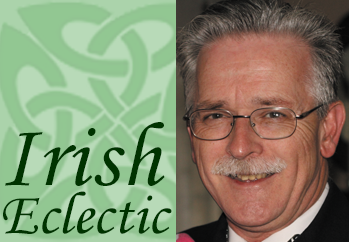Martyrs English and Irish: Some Remembered, Many Forgotten
 By Brian McGowan
By Brian McGowan
I recently traveled to England’s Yorkshire County to visit relatives – Irish-born, of course; part of the Irish Diaspora that numbers 70 million people worldwide.
While there, I was made aware of something I had not known before – the disparity of “Irish Martyrs” versus “English Martyrs,” all co-religionists who suffered gravely from the religious upheavals began by King Henry VIII in the 16th century.
By martyr, I refer to adherents of the Roman Catholic faith, proscribed in both countries from the 1500s until the early decades of the 19th century. There were other martyrs, Protestants, who fell afoul of the official state religion of the British Isles during these times, but my focus here is on Roman Catholics, of which I am one, in a family so aligned since Saint Patrick arrived on Ireland’s shores in the fifth century.
The topic came up while my wife and I hiked the magnificent Yorkshire Dales, in the company of Father Gerry Hanlon, an English-born priest of Irish descent with whom we had difficulty keeping up, despite being almost 20 years younger than his 90 years of age. To say he was spry would be an understatement. He left us in the dust – or at least in a gentle afternoon rain. We hiked across moor and field, river and dale, headed for the Yorkshire hamlet of Linton, where a bucolic pub promised a welcome respite from sodden boots and jackets.
On our way there, we came to a Norman-era Anglican church called Saint Michael and All Angels, while services were underway. When concluded, the vicar invited us to join the congregation for biscuits and coffee. The ensuing conversation touched on a topic that has long interested me – the fate of English Roman Catholics who practiced their religion quietly, or otherwise, in a land where Roman Catholicism was not to be tolerated.
Over a Guiness in Linton’s Fountaine Inn, a delightful pub dating from the 1600s, Father Gerry told us of the 40 or so English Martyrs, who were executed from the 1500s onward. They represented a long-suffering group who endured ostracism, imprisonment and often death while they continued to practice the faith of their ancestors. Unlike Ireland, where most of the people remained staunchly Roman Catholic, English Catholics lived amid a population most of whom had followed their king’s lead and abandoned Roman Catholicism forever.
But what about the “Irish Martyrs?” Surely there would be more of them, given the preponderance of Roman Catholics there. Only one came to mind – Oliver Plunkett – who was brutally executed by the British on July 1, 1681. It was not until 1975 that Plunkett was canonized a saint. This recognition paved the way for more, and the current total is 24.
Now, back to the English Martyrs. Most achieved sainthood some time ago. One struck me, given where I happened to be at the time – Saint Margaret Clitherow – whose home we visited while exploring the City of York.
Known as the Pearl of York, Margaret converted to Catholicism when she was 18. She rapidly became involved in harboring priests, an act made punishable by death in 1585. Her house, now a shrine, is in the picturesque Shambles of York, a street barely changed since the 1400s.
In a 1586 raid, authorities discovered a “priest hole” – a shelter where priests could hide while on the run. Charged with a capital crime, Margaret refused to plead, an act which saved her family the trauma of testifying in a trial, but which also sealed her fate. Pregnant with her fourth child, she was sentenced to death by being crushed under a door weighted by rocks, a judgment carried out on Mar. 25, 1586. She was 30 years old.
Times have changed, the vicar at Saint Michael’s would certainly agree. And any of the lands making up the British Isles – England, Scotland, Ireland and Wales – are well worth the trip, whether visiting relatives or just making way on your own!
Longtime Pleasantville resident Brian McGowan was born and raised in the Bronx, and is a second-, third- and fifth-generation Irish-American/Canadian, as his immigrant ancestors followed several paths to the New World. Reach him at brian.m.mcgowan1952@gmail.com. He is the author of three books: “Thunder at Noon,” about the Battle of Waterloo; “Love, Son John,” about World War II; and “Island Prize,” about the Revolutionary War in 1776 New York. All are available at Amazon.com.

Examiner Media – Keeping you informed with professionally-reported local news, features, and sports coverage.
